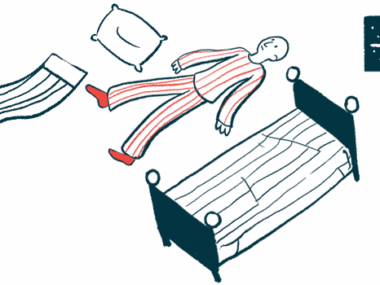Robotic Suit Improves Joint Strength, Mobility in 3 SMA Type 2 Children
Written by |

Rehabilitation sessions using a robotic suit called ATLAS 2030 improved joint strength and mobility in three boys with spinal muscular atrophy (SMA) type 2, according to data from a clinical trial.
While wearing the device, the boys, who could not walk independently, were able to complete tasks involving standing, walking, and sitting, resulting in muscle-related gains after eight sessions.
These preliminary findings support the future use of ATLAS 2030, which has been cleared in the European Union (EU), as part of the long-term rehabilitation of children with SMA, the researchers noted.
Larger studies are needed to confirm the benefits of this approach in this patient population.
The study, “Effects of ATLAS 2030 gait exoskeleton on strength and range of motion in children with spinal muscular atrophy II: a case series,” was published in the Journal of NeuroEngineering and Rehabilitation.
SMA is characterized by progressive muscle weakness and atrophy that mostly affects the legs and hip muscles initially, and later progresses to the upper extremities. This results in limited mobility, hindering the children’s independence and “the development of activities of daily living,” the researchers wrote.
“Resistance strength training exercise is recommended for these children and it is known that motor function is directly linked to muscle strength, and that age-related loss of function in SMA is also related to loss of strength,” they added.
Robot-assisted gait training (RAGT) has been shown to improve walking parameters and energy consumption in children with cerebral palsy, a neurologic condition characterized by balance and mobility problems.
However, the benefits of such intervention in children with SMA remain unclear.
Since children with SMA who are able to walk independently are significantly stronger than those who can’t, the use of robot-assisted gait training in children without walking ability “could have numerous benefits at the musculoskeletal and functional levels,” the researchers wrote.
How did the study test the robotic suit?
With this in mind, MarsiBionics launched a clinical trial (NCT04837157) to test its ATLAS 2030 exoskeleton within RAGT in six children, ages 3–14, who had cerebral palsy or neuromuscular diseases such as SMA and were unable to walk independently.
ATLAS 2030 is the first wearable pediatric gait exoskeleton authorized for use in EU rehabilitation centers and hospitals to help children who have been diagnosed with SMA or cerebral palsy and have walking difficulties.
Designed for children from 3 to 12 years old, it consists of two robotic legs and a trunk that can be easily fitted in five minutes and adjusted as the child grows. The device provides full mobility of hip, knee, and ankle joints through a patented controllable-stiffness joint technology, called ARES.
With this technology, ATLAS 2030 can adapt gait therapy to each user’s needs. The exoskeleton can work in automatic mode and generate a specific walking pattern for each patient, or in the active-assisted mode which detects the patient’s intention to move through non-invasive sensors and then helps to complete every step.
Three boys with SMA type 2, a form of the disease characterized by the inability to walk independently, were recruited to the trial at its single site in Spain. Three children with cerebral palsy also were enrolled and findings in this patient group were previously reported.
In the current study, researchers detailed the effects of using ATLAS 2030 on the strength and range of motion in the hips, knees, and ankles of the three boys with SMA, who had a mean age of 5.7 years.
All had been on the approved SMA therapy Spinraza (nusinersen), given every four months, from age 2 (two boys) and age 3 (one boy).
Following a laboratory eligibility and assessment visit, the boys underwent eight one-hour rehabilitation sessions with the device (two every week). At the third and eighth session, they also completed several assessments, as well as at a final visit 48 hours after the last session.
The sessions involved several tasks, including a sit-to-stand exercise, forward and backward walking with automatic and active-assisted modes, trunk rotations and ball/balloon games while walking, and balance exercises while standing.
Results showed that the robotic suit was used for an average of 53.5 minutes per session and that all the boys were able to carry out all the proposed activities. All completed the study.
How much did the boys improve?
After the intervention, hip, knee, and ankle strength had increased in all three boys. The greatest improvements were observed for hip flexion movements (by 60.2%) and hip extension movements (by 48%), followed by ankle flexion (by 35.4%).
“These improvements in hip strength could lead to a decrease in the probability of [partial dislocation] of this joint, which is so frequent in this population,” the researchers wrote.
RAGT using ATLAS 2030 also resulted in a 12.6% increase in hip range of motion and a 34.1% gain in ankle range of motion. The range of motion of the knees had not changed by the end of the study, compared with the study’s start.
“Along with the above-mentioned physical improvements, the fact of being able to walk and actively move using the exoskeleton favors the motivation and integration of children with disabilities,” the researchers wrote.
“This research could serve as a preliminary support for future clinical integration of ATLAS 2030 as a part of a long-term rehabilitation of children with SMA,” they added.
They emphasized, however, that larger and longer studies — which would include control groups of children who do not use the robotic suit in rehabilitation sessions — are needed to confirm these findings.








